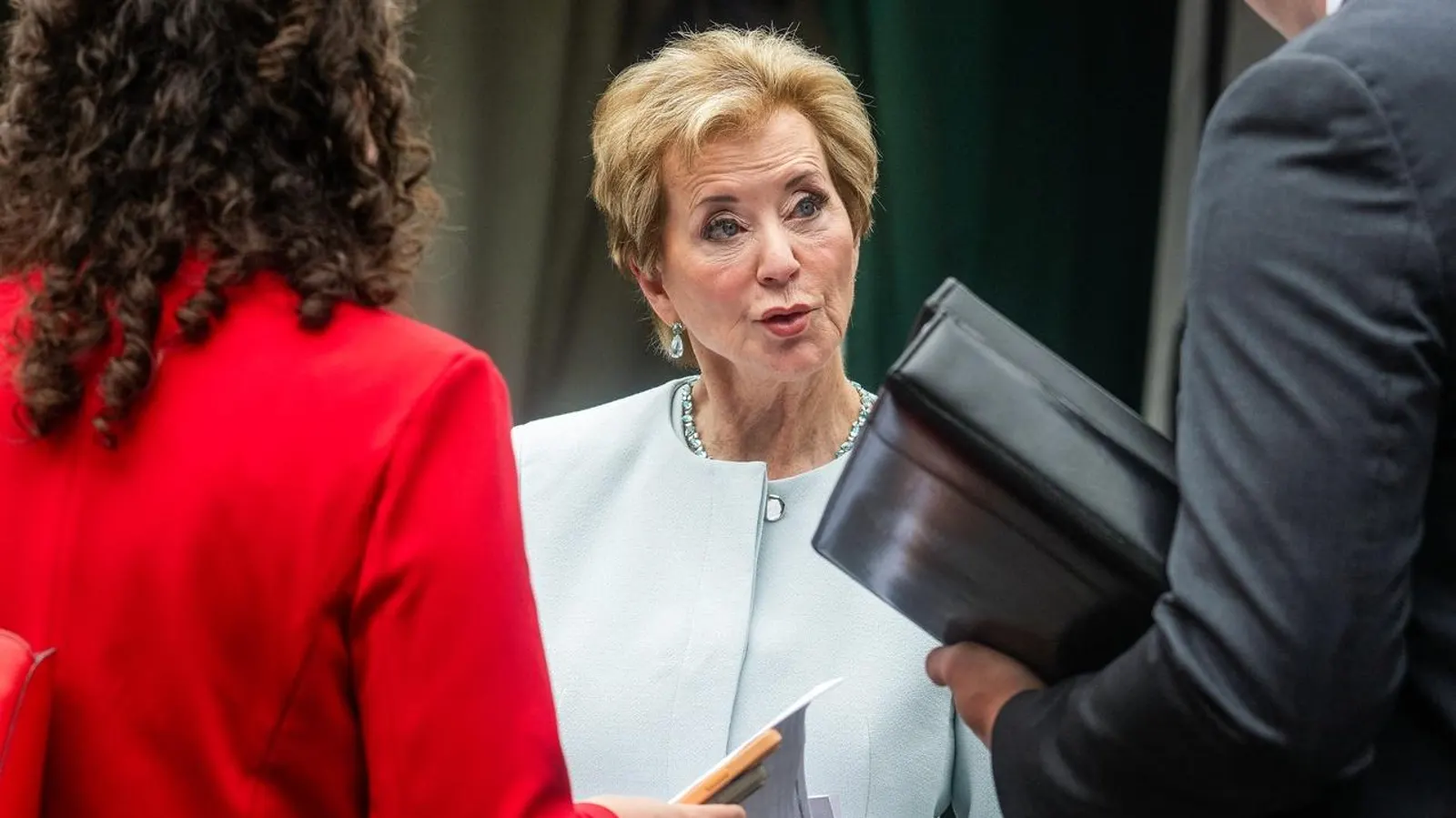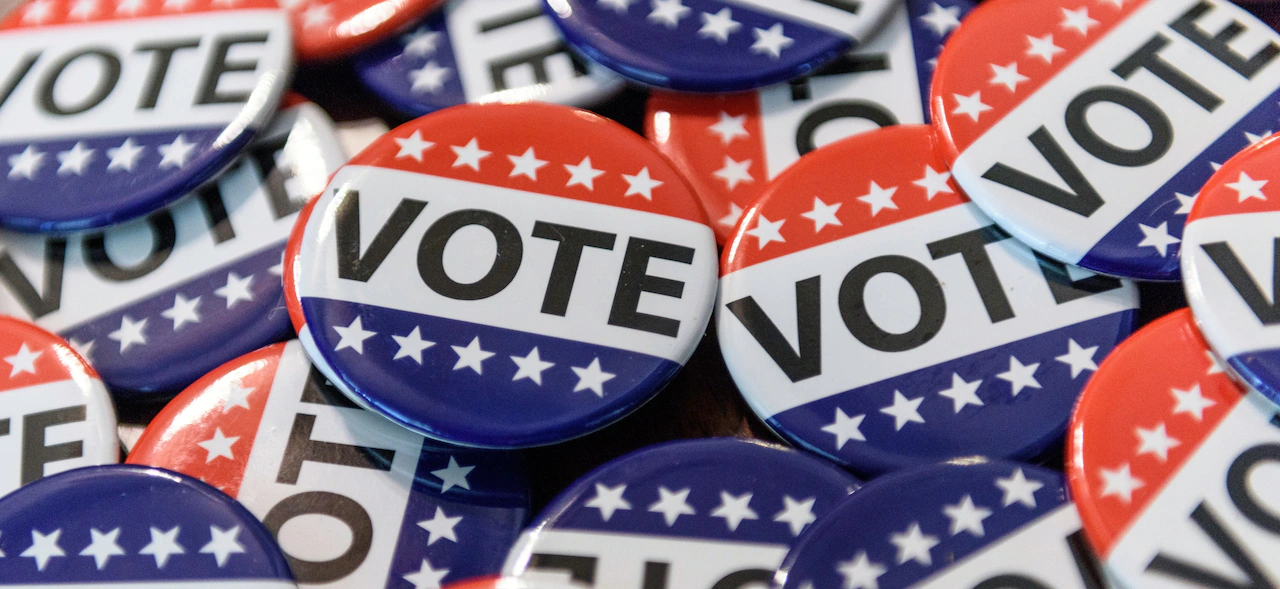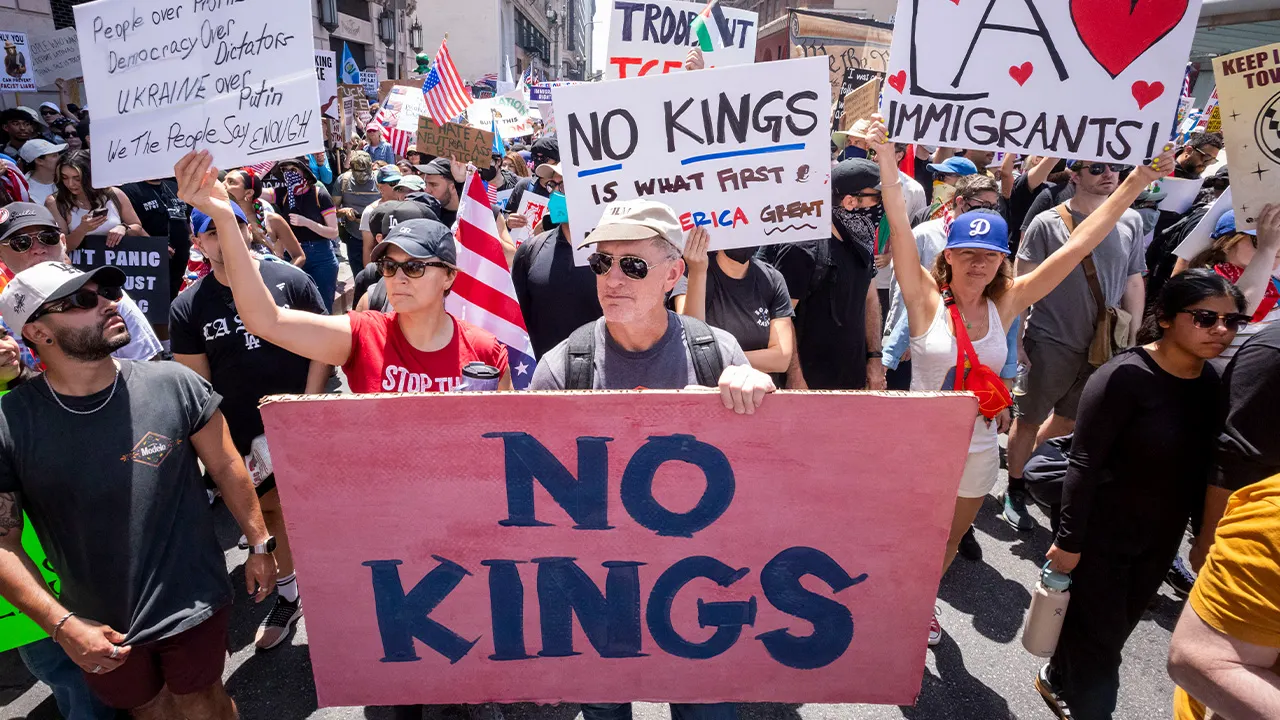Copyright forbes

US Secretary of Education Linda McMahon talks with aides outside the White House in Washington, DC, on July 15, 2025. The Department of Education reached an agreement with a national teachers union last week over allegedly stalled student loan forgiveness. (Photo by Jim WATSON / AFP) (Photo by JIM WATSON/AFP via Getty Images) AFP via Getty Images The Department of Education agreed last week to restart processing student loan forgiveness under several federal programs as part of a joint resolution to an ongoing legal challenge. The agreement, which still must receive final approval from a federal district court judge, is intended to resolve a lawsuit brought by the American Federation of Teachers over allegedly stalled or blocked relief across multiple federal programs. The AFT had alleged that the department and U.S. Secretary of Education Linda McMahon were unlawfully preventing borrowers from accessing key federal student loan relief programs including income-driven repayment and Public Service Loan Forgiveness in part by shutting down the IDR processing system, resulting in massive backlogs. The AFT subsequently expanded its suit to include allegations that the department was illegally denying borrowers student loan forgiveness under several IDR plans and slow-walking applications for the PSLF Buyback program. The Trump administration has consistently denied the AFT’s allegations. A department spokesperson told reporters last week that the delays were related to the administration’s efforts to “separate out” Biden-era “illegal” cancellation programs from “legitimate” student loan forgiveness requirements. Nevertheless, the agreement announced last Friday suggests that borrowers who have been denied relief for much of this year may finally start to see some movement. Here are the key takeaways. Student Loan Forgiveness Restarts For IBR The Department of Education’s agreement with the AFT confirms that student loan forgiveness is resuming for the Income-Based Repayment, or IBR, plan. IBR provides for student loan forgiveness after 25 years in repayment, or after 20 years in repayment for borrowers who first took out their student loans on or after July 1, 2014. The department had previously acknowledged that IBR loan forgiveness was completely legal and unequivocally authorized by Congress, despite legal challenges to student loan forgiveness under other programs. Nevertheless, officials had “paused” IBR loan forgiveness on the basis of needing to update the department’s internal systems, allegedly to comply with recent court orders and to ensure that borrowers were not receiving IDR credit for certain deferment or forbearance periods. MORE FOR YOU But the AFT had argued that a systemwide IBR loan forgiveness pause was unlawful. While not acknowledging any wrongdoing, the department indicated that it would fully resume student loan forgiveness under IBR for borrowers who reach the 20- or 25-year threshold. Borrowers had reported receiving IBR loan forgiveness approval notifications via email in September, suggesting that the department had already started lifting the pause shortly after the AFT amended its lawsuit to include the block on IBR discharges. Student Loan Forgiveness Restarts For ICR And PAYE The Department of Education also agreed to restart student loan forgiveness under the ICR and PAYE plans, which provides for discharges after 25 or 20 years in repayment, respectively. The department had previously argued that loan forgiveness under these two programs was blocked due to a court order in the ongoing legal battle over the SAVE plan, because ICR and PAYE were created by the department using the same statutory authority that was the basis for SAVE. The department had been advising borrowers in ICR or PAYE that they would need to switch to IBR to receive any student loan forgiveness. “Borrowers can have their loans forgiven if they are enrolled in the IBR Plan,” says department guidance that was last updated in July. “Payments on PAYE, SAVE, and ICR are counted toward IBR Plan forgiveness if the borrower enrolls in the IBR Plan.” But the AFT had argued that no court had explicitly barred the department from discharging the debt of qualifying borrowers enrolled in SAVE or PAYE who reached their student loan forgiveness threshold. Without admitting to wrongdoing, the department agreed in its joint resolution with the AFT to resume processing student loan forgiveness under ICR and PAYE for borrowers who have reached their qualifying payment threshold. That means that it should no longer be necessary for these borrowers to switch to IBR to receive a discharge if they otherwise qualify. Student Loan Forgiveness Remains Blocked For The SAVE Plan While the Department of Education has agreed to restart student loan forgiveness under the IBR, ICR, and PAYE plans, loan forgiveness remains blocked for those in the SAVE plan. That’s because a different court issued an injunction last year preventing the department from implementing SAVE, including provisions of federal regulations that provide for loan forgiveness. That court broadened the scope of the SAVE plan injunction earlier this year, and that expanded injunction remains in place. The agreement between the AFT and the department does not disturb the SAVE plan injunction, so loan forgiveness remains blocked for these borrowers. The agreement also does nothing to stop or reverse the interest that has now been accruing for SAVE plan borrowers as of August 1, after the Trump administration announced the restarting of interest. Borrowers who are still in the SAVE plan forbearance but want to receive student loan forgiveness or resume making progress toward an eventual discharge (including under PSLF) would need to switch to IBR, ICR, or PAYE. “We encourage borrowers to look at the specific terms of each plan to make the best choice for their individual situation,” says department guidance. “Different IDR plans may require different monthly payments, and—in the case of the IBR Plan—borrowers who later enroll in a different repayment plan may face interest capitalization (where unpaid interest is added to the principal balance). However, payments made under these IDR plans will count toward forgiveness under IDR and PSLF.” Student Loan Forgiveness Tax Relief Assurances As part of the agreement with the AFT, the department also made assurances to protect certain borrowers from tax consequences associated with student loan forgiveness under income-driven repayment plans. With IDR loan forgiveness set to revert to being treated as taxable “income” again for borrowers starting on January 1, 2026, the AFT had argued that the department’s ongoing processing delays and pauses would cause some borrowers to be unfairly hit with significant tax consequences if their discharges were pushed into next year. Under the terms of the agreement with the AFT, the department affirmed that borrowers who qualify for IDR student loan forgiveness during 2025, but do not receive a discharge until next year, will not be issued a cancellation of debt tax form that would result in a taxable income reporting requirement. Importantly, borrowers who are enrolled in the SAVE plan and have already reached their student loan forgiveness milestone would need to apply to switch to IBR, ICR, or PAYE before the end of the year to be covered by this benefit. PSLF is a tax-free form of student loan forgiveness at the federal level, and that won’t change next year. So, the AFT agreement does not reference tax protections for PSLF borrowers. However, some states may treat loan forgiveness under PSLF as taxable, even if the federal government does not. Expanded Access For Student Loan Borrowers Pursuing IBR The “One Big, Beautiful Bill Act” that Congress enacted in July not only preserves IBR (while ICR, PAYE, and SAVE will be phased out by 2028); it also expands access to IBR by dropping a “partial financial hardship” requirement that effectively barred enrollment for certain borrowers with high income relative to their student loan balance. But while the change to the law was immediate, the department’s implementation of that change was not. The AFT argued that this delay was illegal, and sought to include this issue in its expanded lawsuit. The agreement that the department announced last week with the AFT affirms that student loan borrowers will not be barred from enrolling in IBR based on their income. “Defendants will not deny as ineligible any borrower applying for the IBR plan on the ground that the borrower lacks a ‘partial financial hardship,’ as previously defined by Section 493C(a)(3) of the Higher Education Act of 1965,” says the agreement. “Defendants will hold such borrowers’ applications in abeyance until Defendants update their systems to allow for proper processing of these applications. Defendants affirm (and will state on studentaid.gov) that borrowers who applied for the IBR plan on or after July 4, 2025 and were denied on the basis that they lacked a partial financial hardship are invited to reapply.” However, the department has provided no updates on the anticipated timeline of the removal of the “partial financial hardship” requirement for IBR. Currently, the department’s website still says this will not be allowable until this winter. Student Loan Forgiveness Processing For PSLF Buyback Continues The Department of Education reaffirmed that it would continue processing requests for PSLF Buyback, which allows borrowers to receive student loan forgiveness by making a payment to cover certain deferment or forbearance periods that didn’t count. “Defendants will continue processing applications for Public Service Loan Forgiveness (PSLF) Buybacks,” says the agreement. However, no additional details were provided, and it is unclear whether much will change with respect to PSLF Buyback processing. Since the AFT filed its lawsuit in the spring, the department has steadily been processing PSLF Buyback applications. But the rate of new submissions have far outpaced the rate of processing, resulting in a steadily growing backlog. Court Monitoring Of Implementation Of Student Loan Forgiveness Processing The agreement reached between the AFT and the Department of Education over stalled student loan forgiveness does not officially end the AFT’s legal challenge. Instead, it pauses it. As part of the agreement, the department will provide six monthly status updates, filed as public documents on the court docket, with detailed information on progress made in processing IDR applications and implementing student loan forgiveness under ICR, IBR, PAYE, and the PSLF Buyback program. After the six monthly status reports have been filed, the parties will confer about next steps in the litigation. Editorial StandardsReprints & Permissions



